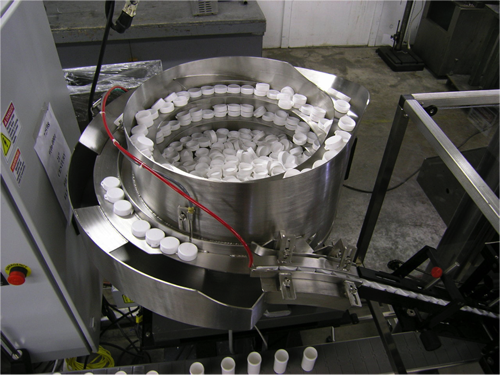 Loading... Please wait...
Loading... Please wait...What Machines Put Caps Onto Bottles?
Posted by Krys Beal on 25th Feb 2019

In the packaging industry, there are a handful of different machines that contribute to the successful bottling of products. Some of those machines are responsible for putting caps onto the containers. Automating the capping step in your packaging line is not only timesaving, but also much easier than doing it manually. There are a number of different machines that contribute to this step in the packaging process. Let’s learn a little bit more about them all.
Pluggers, Chuck Cappers, Snap Cappers and Spindle Cappers
To start, there are different types of container-closing options you have—plugs and caps. There are a few different types of caps you can choose from, and depending on the type of product you’re bottling or packaging, one of them may be a more ideal choice. Pluggers are used for products where the closure is on a bottle—for instance, a wine bottle. Wine bottles often have plug-style seals, such as corks. Chuck capping machines pick up a cap, and a spinning head twists the cap onto a container. Spindle cappers are similar machines, in that they work with caps that spin onto containers, however spindle cappers simply shuffle a container down a conveyer through moving heads, which tighten the lids onto the container after the lids have been placed there. Finally, snap cappers press caps securely onto containers.
Cap Sorting Elevators
Cap sorting elevators qualify good caps as they are carried up a belt, choosing caps that are correctly positioned to bring up the elevator. Ones that are not in the correct position are sent back to the hopper to be “requalified,” or repositioned and oriented correctly. These machines can accommodate caps from 10mm to 110mm.
Cap Pre-Feeders
Cap pre-feeders are used to increase the efficiency of automatic capping machines, without taking up any additional floor space on the packaging line. It is manually filled with cases of caps, and then is activated when the supply of caps must be replenished. This speeds up the overall capping process.
Cap Sorters
Cap sorters do exactly what you’d think—sort a range of caps. With a vibratory motion, they orient the caps so they are ready to be placed onto each container you are filling. There are also centrifugal sorters, which involve spinning the caps to the outer part of the bowl of caps, where they are oriented. Pocket sorters work by mounting on top of the capper frame and are commonly used for high-speed cap sorting applications. Finally, elevator sorters elevate the caps and sort them using a cleated belt.
Cap Elevators
Cap elevators are used to assist automatic capping. The operator empties cases of caps into the elevator hopper, and the machine is activated when the supply of caps needs to be replenished. It can accommodate a range of different sized caps, from 10mm to 110mm, and the elevators serve the purpose of carrying caps from one part of the process to the next.

